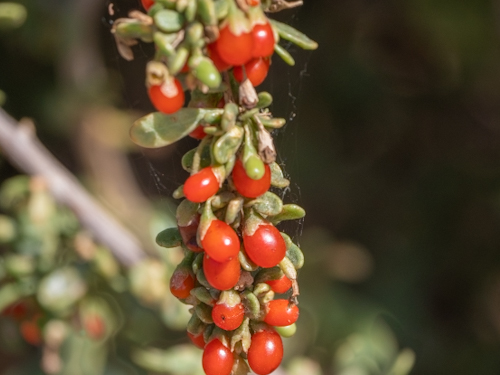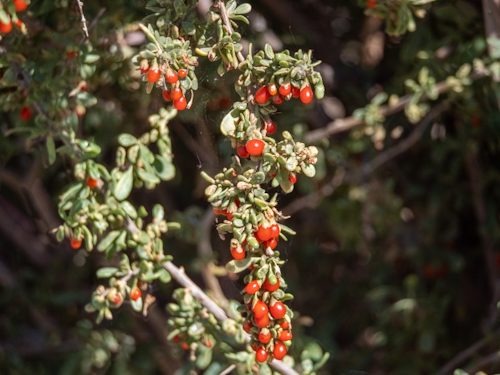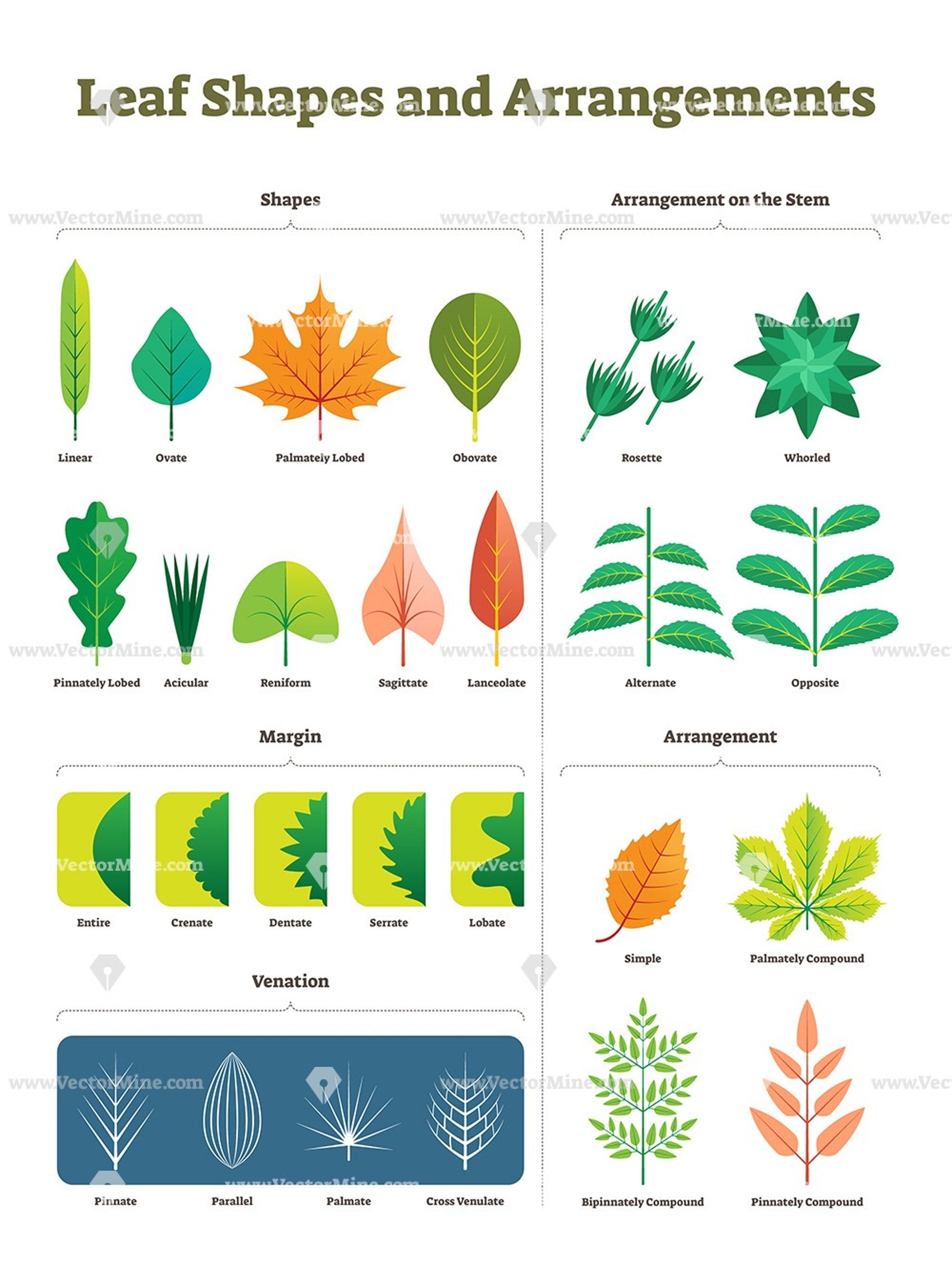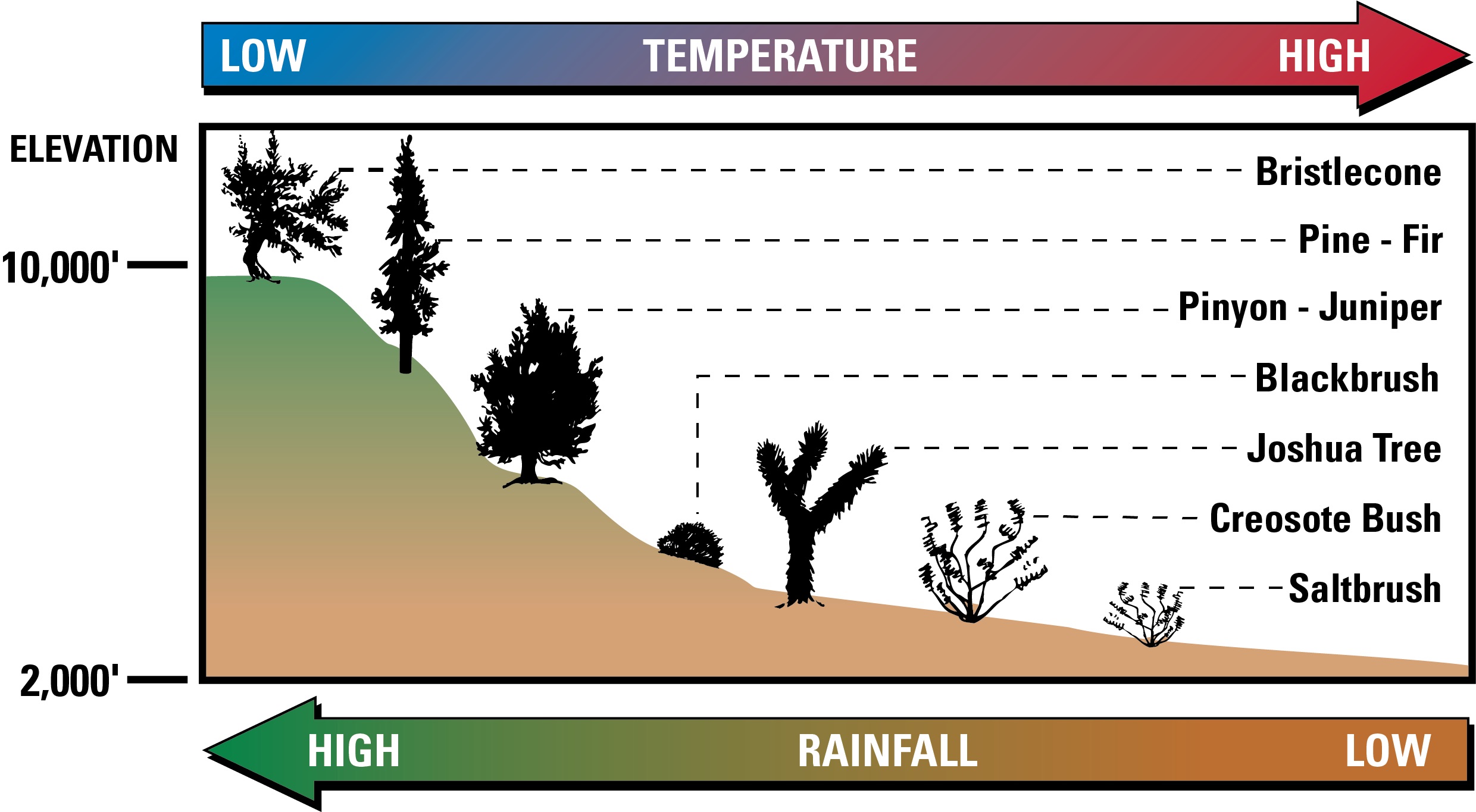Lycium andersonii
Anderson Boxthorn
This plant is a slow growing shrub up to about 2.7 meters (8 ft 10 in) in maximum height. It grows from a large fibrous root system which can extend over 9 metres (30 ft) from the base of the plant. The shrub is rounded in shape with many branches covered in many thin spines up to 2 centimetres (0.79 in) long. The flat leaves are thick and fleshy, measuring up to 1.7 centimetres (0.67 in) long. They are shed from the plant in dry conditions. The flowers have funnel-shaped white or purple-tinged corollas up to a centimeter long. The fruit is a red or orange berry less than a centimeter long. Favorite food of Chukar and Gambel's Quail.





